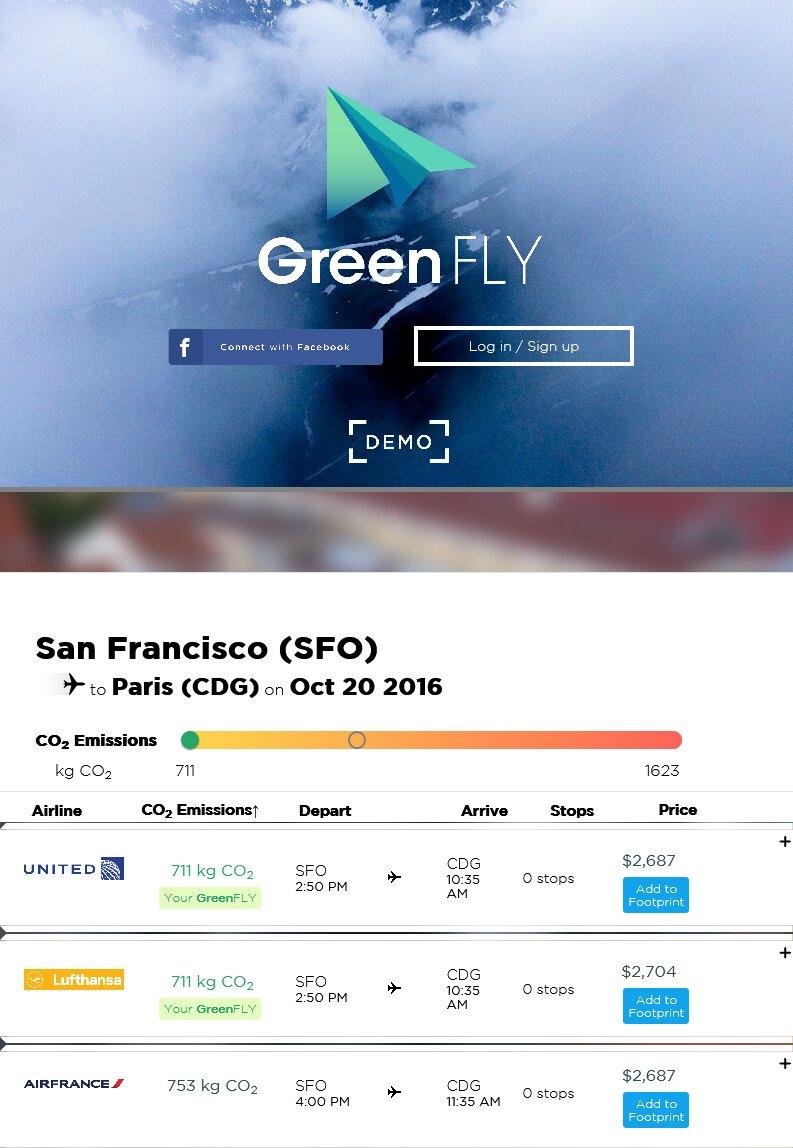
UC Davis Study Suggests Providing Emissions Information Can Make Flying Greener
Quick Summary
- When given emissions information alongside price and duration, participants in two studies were willing to pay more for flights to offset their carbon emissions
- If these findings hold across the industry, it would be a significant step toward the White House goal of cutting airline emissions by 20% by 2030
As of October, Google Flights displays carbon emissions estimates alongside the duration, layovers and price for each flight. New research from UC Davis computer science professor Nina Amenta and Institute of Transportation Studies environmental psychologist Angela Sanguinetti suggests that this new interface will cause small but important changes in how people choose flights and possibly lead to lower emissions.
Flights accounted for about 2.5% of worldwide greenhouse gas emissions in 2019, and for frequent flyers, air travel is a significant part of their carbon footprint. Every flight emits a lot of CO₂, but fuller flights on newer planes and non-stop routes can emit up to 30% less. This means individual flight choice can make a difference.

Sanguinetti and Amenta conducted two experiments—one with UC Davis employees and one with a sample of the public—to see how showing emissions estimates might change behavior. In both, they asked participants to choose among hypothetical flight choices on an interface very similar to the new Google Flights that showed CO₂-equivalent emissions prominently and labeled the greenest flight.
While price was still the most important consideration, participants were willing to pay well above current carbon offset prices for flights with lower emissions. In a typical example, participants were willing to pay about $20 more for a flight with 900kg emissions instead of an alternative with 1000kg emissions. The price of offsetting carbon averages $3-6 per ton, which means people in the studies were willing to pay about $200 per ton of CO₂ saved. This surprisingly strong effect was consistent between the two studies.
“Having emissions as part of the choice is a very different psychological experience than someone asking you to pay an offset,” said Amenta. “In the context of already spending a bunch of money, you’re spending a little bit more to get a slightly greener flight. It’s still a lot of emissions, but are you willing to pay $20 to cut emissions by 10-15%? Sure, why not!”

When travelers are already balancing convenience or comfort against price, factoring in emissions can tip the scales toward greener flight choices.
“Everybody likes non-stop flights, but when you also see that they’re the lower-emitting flights, it gives you an extra excuse to splurge on the more convenient option,” Sanguinetti explained.
Potential Emissions Reductions
In the new study of UC Davis employees published in Transportation Research Record, Sanguinetti and Amenta estimate that emissions could drop by 4% just by changing the university’s flight search interface to highlight lower-emissions flights. A similar impact across the market would be a significant step towards the White House goal of cutting aviation emissions by 20% by 2030.
This would require significant changes both in consumer behavior and airline flight offerings, but Amenta and Sanguinetti think that if consumers do prioritize and pay more for greener flights, it could send ripple effects across the industry.
“If the airlines see that people are searching for lower emissions flights, that could encourage them to get newer aircraft, retire some of the gas guzzlers and hopefully speed up research on stuff like biofuels that might really reduce emissions,” said Amenta.
Toward Greener Aviation
Adding CO₂ emissions to flight searches isn’t a new idea. Environmental companies like Calasi previously developed browser extensions that pasted emissions information into popular flight search sites, but the extensions were hard for users to adopt and difficult to maintain.

Sanguinetti and Amenta’s work in this area began in 2014 when Google bought ITA, the company that would become Google Flights. For several years Google kept the ITA application programming interface (API) open to the public. The researchers saw this as an opportunity and enlisted a team of undergraduate students in computer science and design to work on the project. The result was GreenFLY, a flight search tool that sorted real flights by CO₂ emissions and labeled the greenest flight, very similar to the new Google Flights interface.
“GreenFLY was really the first site to be custom built to prioritize and prominently display emissions information,” said Sanguinetti. Since then, emissions have appeared as an option in Kayak and Skyscanner, in an environmentally-focused app called Lite.Flights and now on Google Flights’ default interface.
Both GreenFLY and the new Google Flights calculate emissions using data and algorithms from the European Environmental Agency on how much different planes emit across different distances. Amenta is optimistic that accurate emissions estimates from Google will build trust from consumers and the airline industry.
“They have relationships with the airlines, so hopefully they can get better data on fuel efficiency per seat, and with their own search data they might be able to predict flight occupancy, which is a big factor,” Amenta said.
Google turned off the API in 2016, so GreenFLY no longer does live searches and only exists as a demo. However, it showed the researchers how much emissions could vary among flights with the same origin and destination and it suggested the potential psychological impact the interface could have, which inspired their subsequent research.

As an environmental psychologist, Sanguinetti is eager to see how the emissions information on Google Flights, as well as its competitors, impacts consumers’ behavior when making real purchases.
“Based on our research, we think we’ll see demand for more fuel-efficient flights, but it will be interesting to see what really happens when the rubber hits the road,” she said. “Cultivating this kind of awareness can often inspire other kinds of environmentally-responsible consumer choices.”
